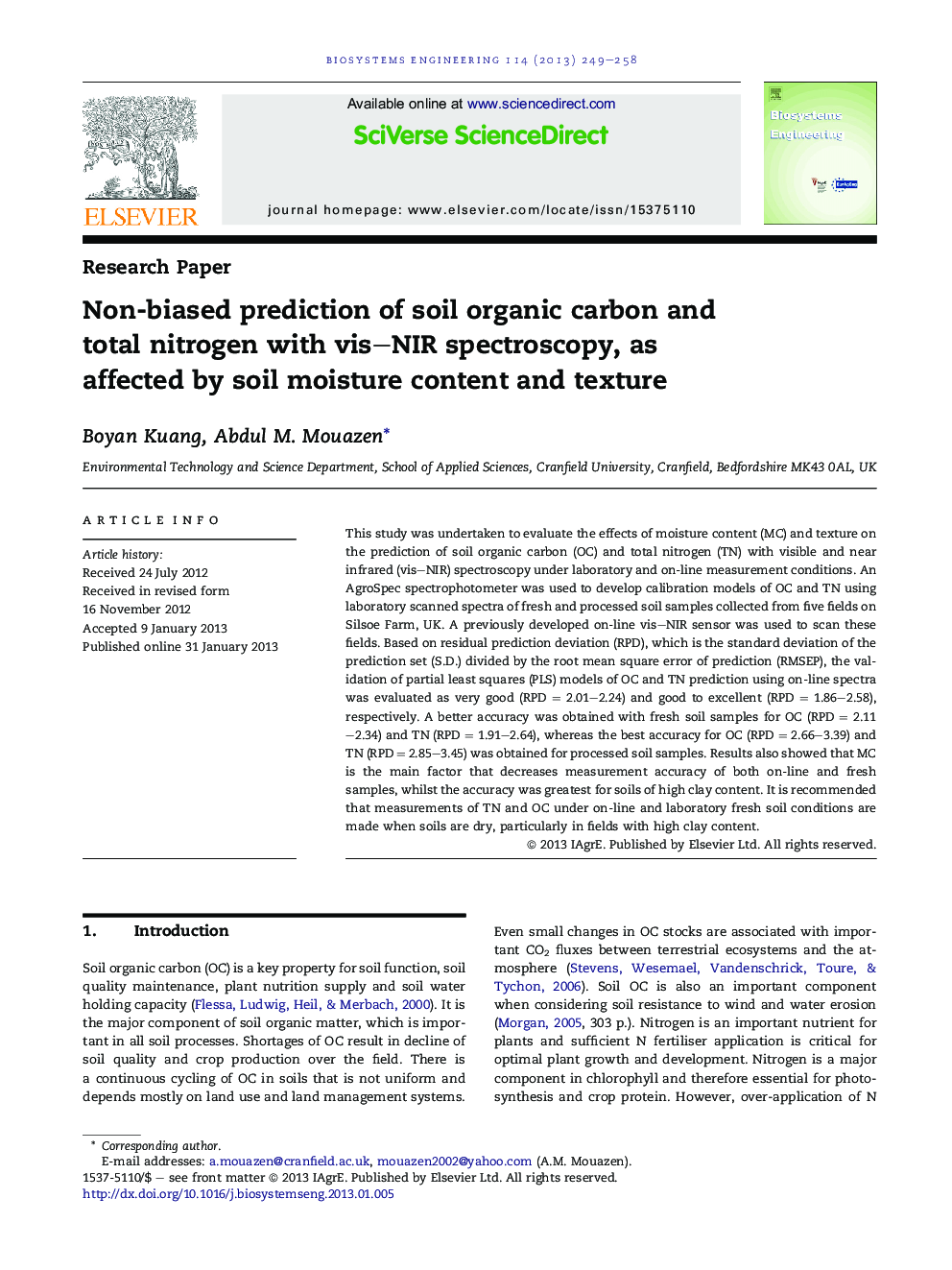| Article ID | Journal | Published Year | Pages | File Type |
|---|---|---|---|---|
| 1711286 | Biosystems Engineering | 2013 | 10 Pages |
This study was undertaken to evaluate the effects of moisture content (MC) and texture on the prediction of soil organic carbon (OC) and total nitrogen (TN) with visible and near infrared (vis–NIR) spectroscopy under laboratory and on-line measurement conditions. An AgroSpec spectrophotometer was used to develop calibration models of OC and TN using laboratory scanned spectra of fresh and processed soil samples collected from five fields on Silsoe Farm, UK. A previously developed on-line vis–NIR sensor was used to scan these fields. Based on residual prediction deviation (RPD), which is the standard deviation of the prediction set (S.D.) divided by the root mean square error of prediction (RMSEP), the validation of partial least squares (PLS) models of OC and TN prediction using on-line spectra was evaluated as very good (RPD = 2.01–2.24) and good to excellent (RPD = 1.86–2.58), respectively. A better accuracy was obtained with fresh soil samples for OC (RPD = 2.11–2.34) and TN (RPD = 1.91–2.64), whereas the best accuracy for OC (RPD = 2.66–3.39) and TN (RPD = 2.85–3.45) was obtained for processed soil samples. Results also showed that MC is the main factor that decreases measurement accuracy of both on-line and fresh samples, whilst the accuracy was greatest for soils of high clay content. It is recommended that measurements of TN and OC under on-line and laboratory fresh soil conditions are made when soils are dry, particularly in fields with high clay content.
► Vis–NIR measurement of OC and TN are affected by soil texture and moisture content. ► The highest accuracy was obtained with laboratory processed samples. ► The lowest accuracy was obtained with on-line field measurement. ► Both individual and interaction effects of MC and texture on accuracy are significant.
